Abstract
Milk feeds were given through indwelling nasogastric tubes to 14 infants with respiratory distress. Similar cardiorespiratory disturbances were observed when the infants were fed (5 ml/kg per feed) human milk, cow's mild, or distilled water. Pao2 fell after a feed but recovered to the prefeed value at 30 minutes, at which time Paco2 had fallen and the respiratory rate had increased. No changes in pH, heart rate, or blood pressure were observed. Portal sinus pressures rose after feeding in association with an increase in central venous pressure. In contrast, when the ill infants were fed human milk at a volume of 2-5 ml/kg per feed no consistent changes in any of the measurements were found. These studies suggested that the cardiorespiratory effects were related to volume displacement resulting from feeds being introduced into the stomach. The relation of the increase in central venous pressure and the magnitude and direction of shunting in infants with the respiratory distress syndrome is uncertain. Adverse effects may be avoided by giving smaller, and therefore even more frequent, feeds.
Full text
PDF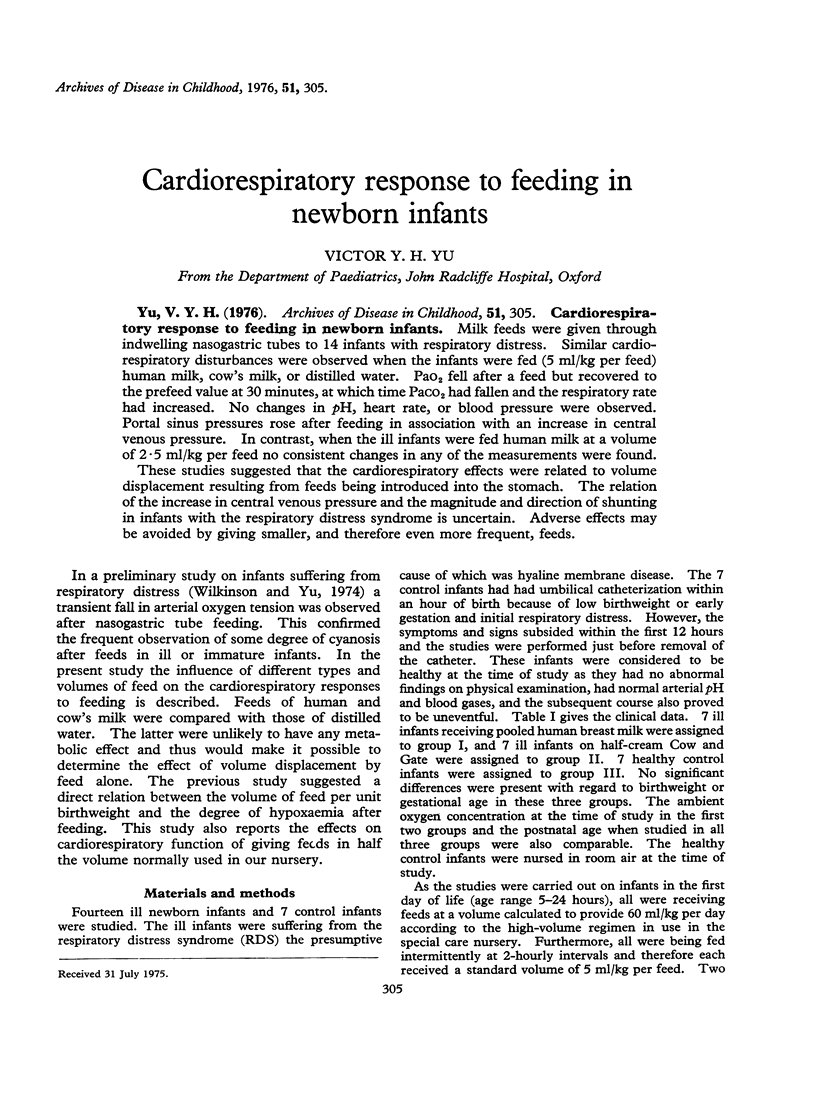
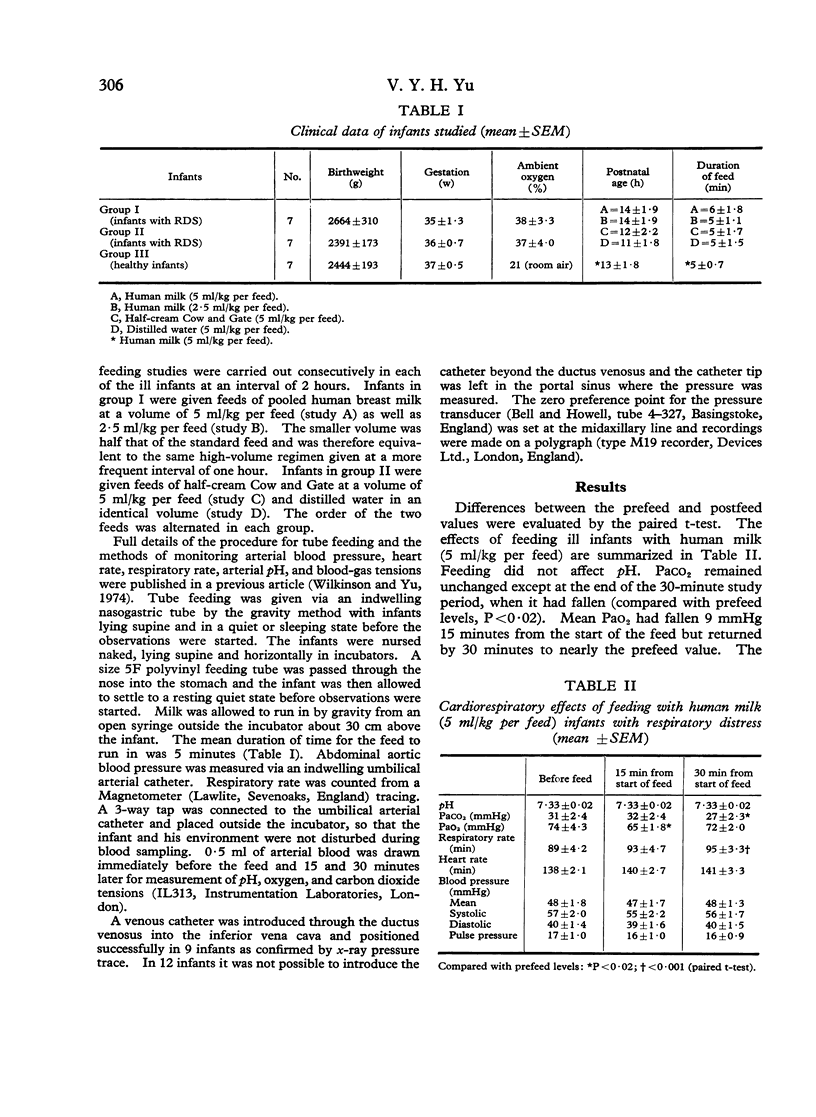
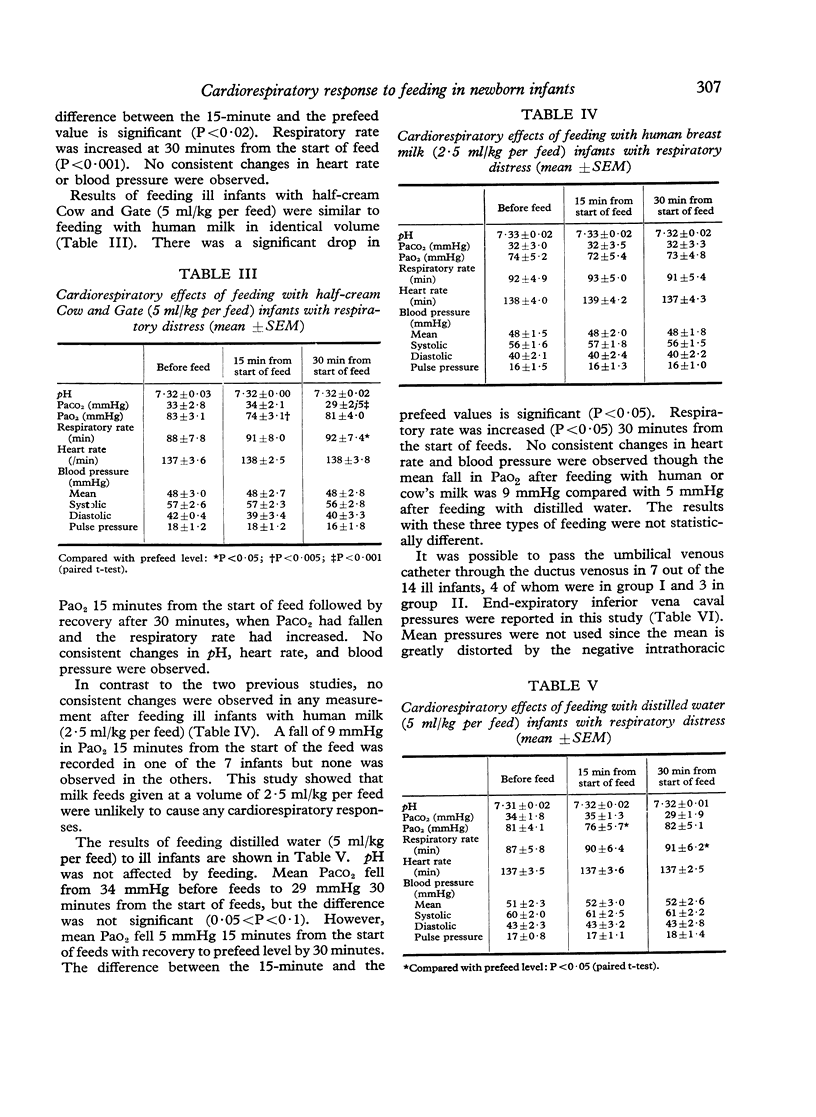
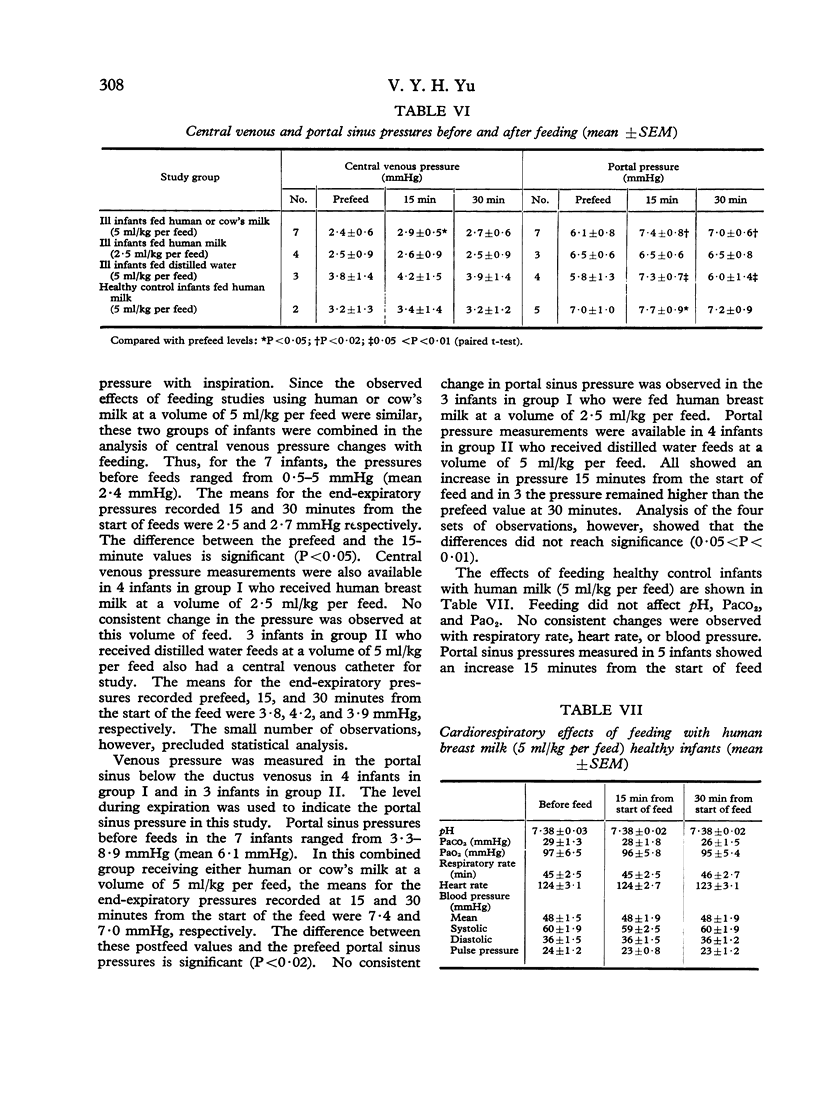
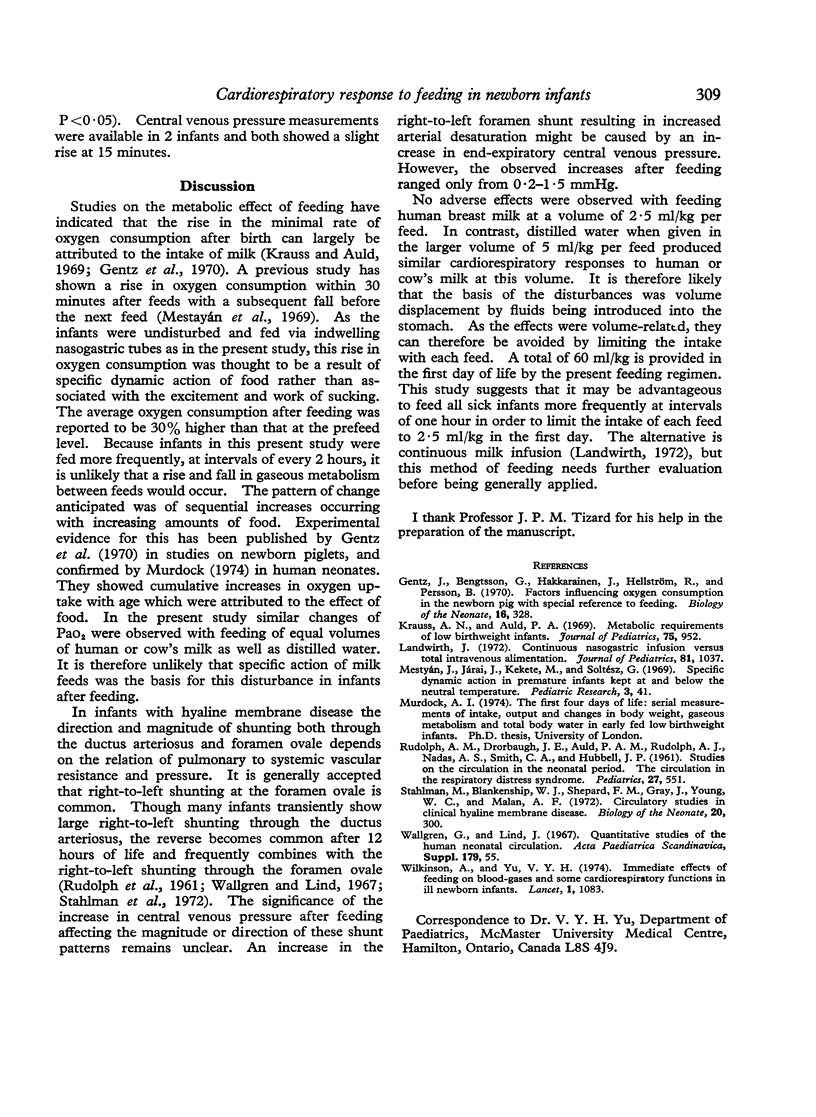
Selected References
These references are in PubMed. This may not be the complete list of references from this article.
- Gentz J., Bengtsson G., Hakkarainen J., Hellström R., Persson B. Factors influencing oxygen consumption in the newborn pig with special reference to feeding. Biol Neonate. 1970;16(5):328–341. doi: 10.1159/000240291. [DOI] [PubMed] [Google Scholar]
- Krauss A. N., Auld P. A. Metabolic requirements of low-birth-weight infants. J Pediatr. 1969 Dec;75(6):952–956. doi: 10.1016/s0022-3476(69)80331-8. [DOI] [PubMed] [Google Scholar]
- Landwirth J. Continuous nasogastric infusion versus total intravenous alimentation. J Pediatr. 1972 Nov;81(5):1037–1038. doi: 10.1016/s0022-3476(72)80571-7. [DOI] [PubMed] [Google Scholar]
- Mestyán J., Járai I., Kekete M., Soltész G. Specific dynamic action in premature infants kept at and below the neutral temperature. Pediatr Res. 1969 Jan;3(1):41–50. doi: 10.1203/00006450-196901000-00006. [DOI] [PubMed] [Google Scholar]
- RUDOLPH A. M., DRORBAUGH J. E., AULD P. A., RUDOLPH A. J., NADAS A. S., SMITH C. A., HUBBELL J. P. Studies on the circulation in the neonatal period. The circulation in the respiratory distress syndrome. Pediatrics. 1961 Apr;27:551–566. [PubMed] [Google Scholar]
- Stahlman M., Blankenship W. J., Shepard F. M., Gray J., Young W. C., Malan A. F. Circulatory studies in clinical hyaline membrane disease. Biol Neonate. 1972;20(3):300–320. doi: 10.1159/000240473. [DOI] [PubMed] [Google Scholar]
- Wallgren G., Lind J. Quantitative studies of the human neonatal circulation. IV. Observations on the newborn infants peripheral circulation and plasma expansion during moderate hypovolemia. Acta Paediatr Scand. 1967;(Suppl):57+–57+. [PubMed] [Google Scholar]
- Wilkinson A., Yu V. Y. Immediate effects of feeding on blood-gases and some cardiorespiratory functions in ill newborn infants. Lancet. 1974 Jun 1;1(7866):1083–1085. doi: 10.1016/s0140-6736(74)90558-3. [DOI] [PubMed] [Google Scholar]


